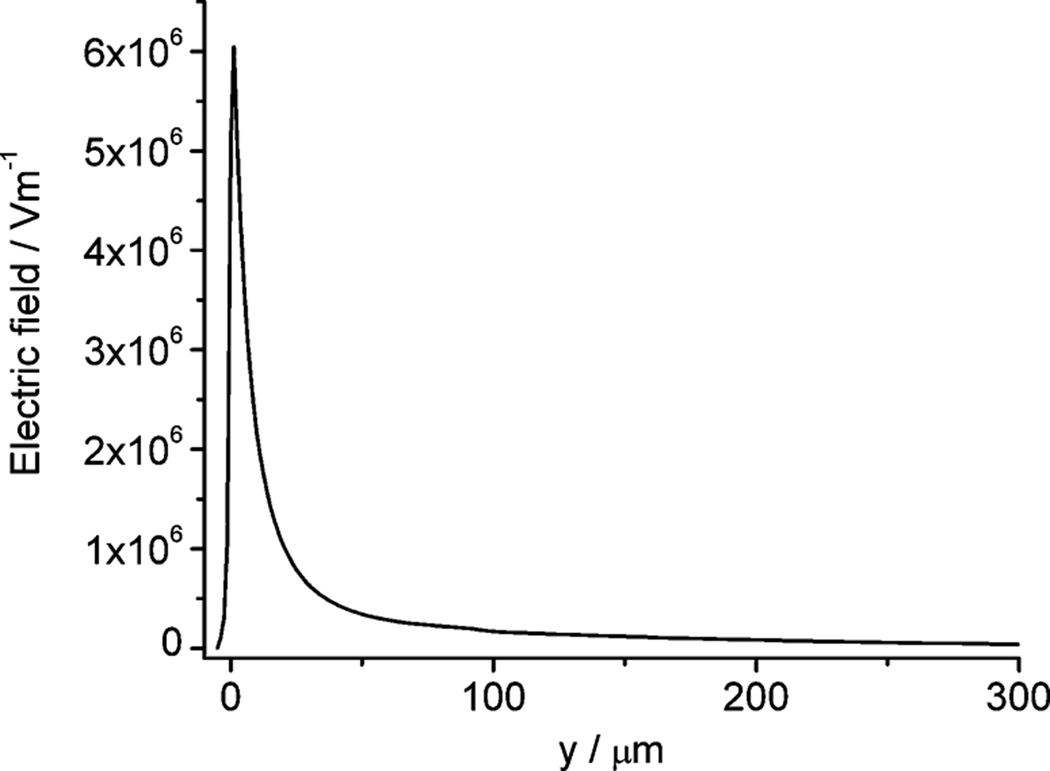Figure 1.
Schematic diagram of the experimental setup. Either of two circuits, electroporation with current monitoring and test circuit may be used by throwing a switch. By switching from A to B, the active circuit converts from the test circuit to the electroporation circuit. A multipostion rotary selector switch shelled in a grounded box is used for switching. (1) Switch position at A. The test circuit is on. The function generator produces a 2 V (rms) sine wave at 100 Hz. The resulting current goes through the same path taken by the current during electroporation including the interface of Pt with the electrolyte, its container, the capillary, the pulled tip, the cell dish filled with buffer, and the other electrolyte/Pt interface and to ground through a current-to-voltage converter in a lock-in amplifier. The lock-in amplifier has its reference input connected to the signal output of the function generator, thus locks the 100 Hz frequency and gives current reading at this specific frequency. This circuit is used for capillary and connection testing. (2) Switch position at B. The electroporation circuit is on. An electroporator provides a high voltage pulse applied for electroporation by pushing a trigger button. The current goes through the same elecrode and electrolyte path as described above. It goes to ground through a resistor and an oscilloscope in parallel. The oscilloscope is used to examine the pulse shape and magnitude as well as monitoring the current going through the electroporation circuit.

